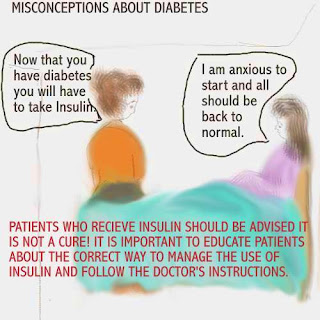THE DIABETIC PATIENT - PATIENT AND FAMILY TEACHING

Rick has a history of Type2 Diabetes Mellitus. His blood glucose has been high and he has Insulin ordered twice a day. It is midnight and he is requesting his wife brings snacks from home. He has an ankle ulcer and gangrene of the big toe. What would Rick's care plan include? - patient and family teaching -blood glucose monitoring -circulation checks and monitoring of wound healing of the affected foot. PVD ( Peripheral Vascular Disease may complicate Diabetes Mellitus. Patient and family teaching is very important.


